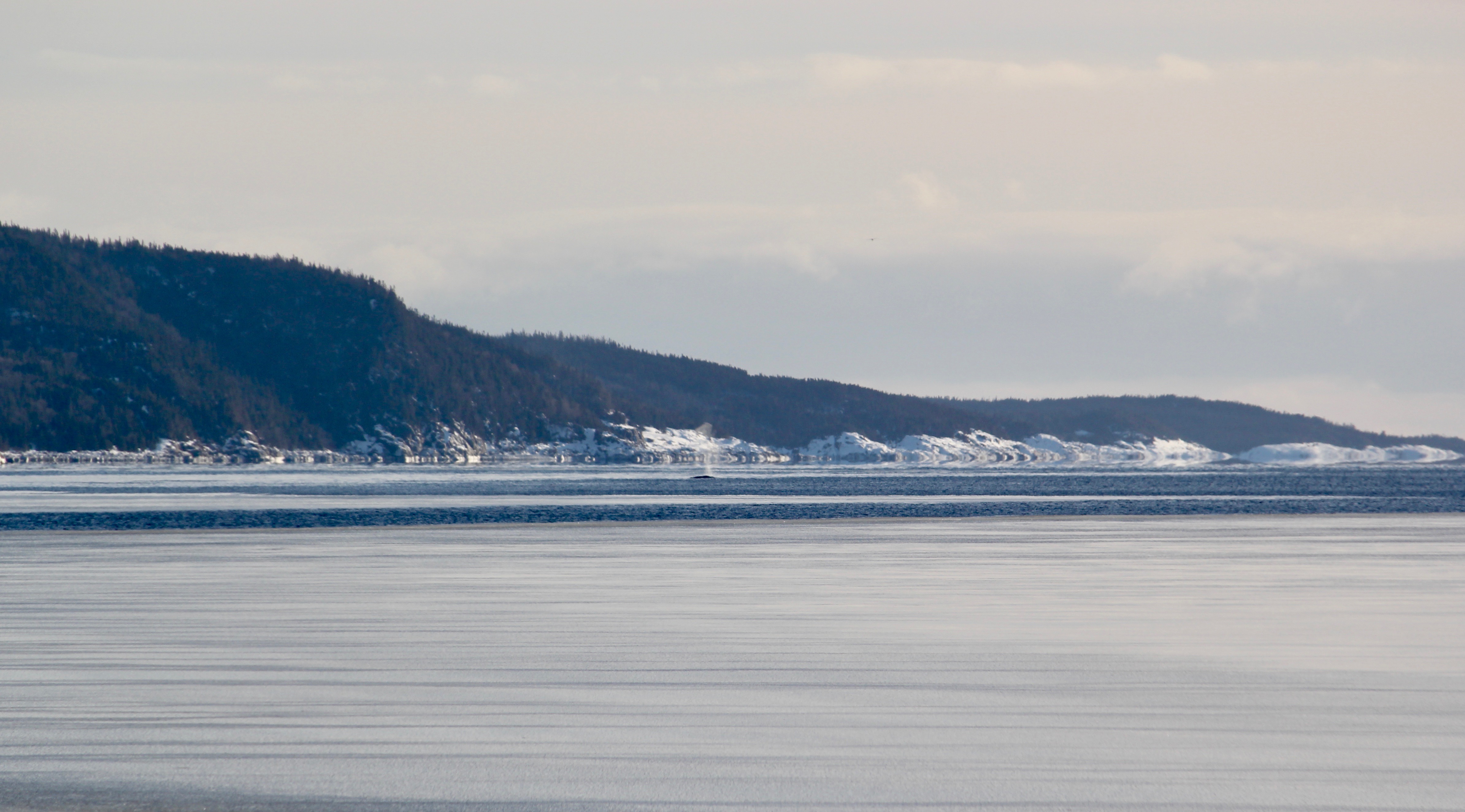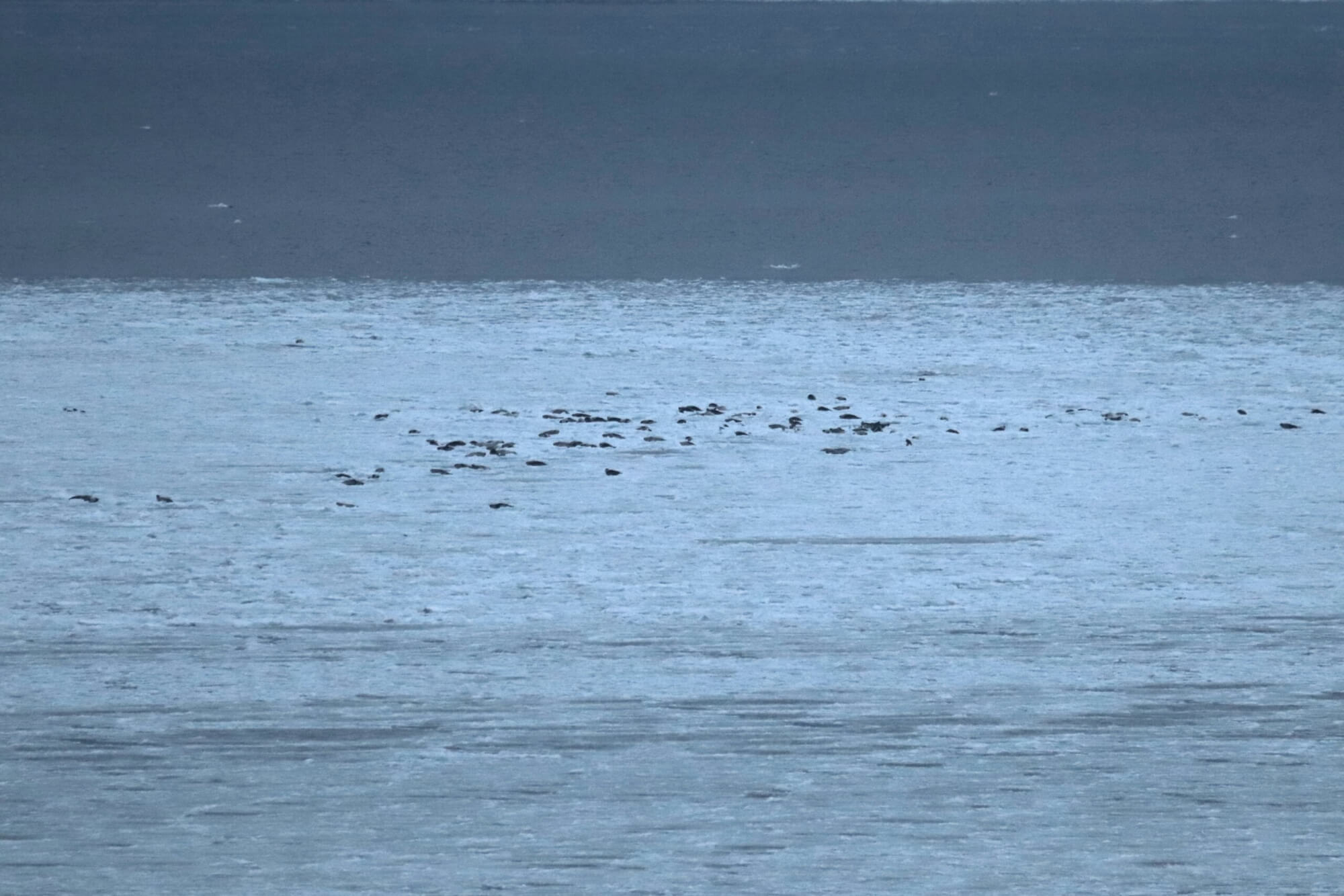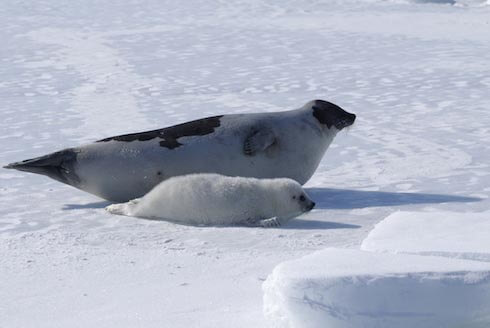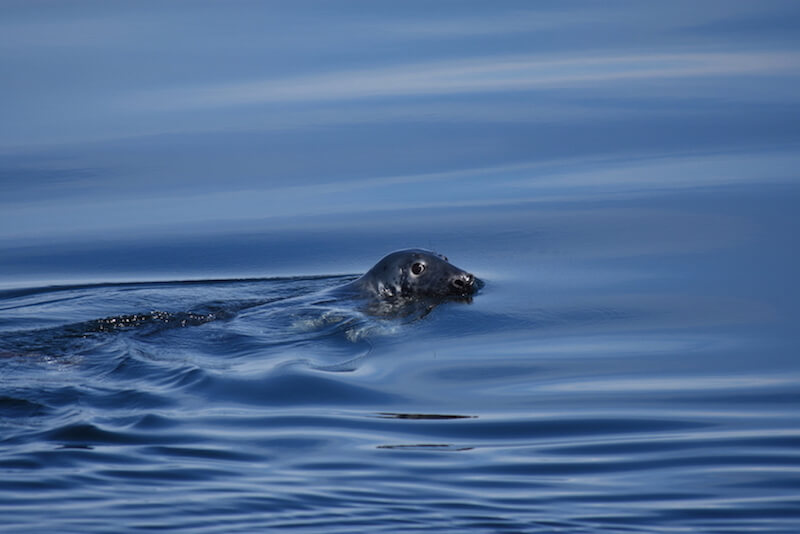Large rorquals continue to blow off the coasts of Franquelin and Godbout, making for some extraordinary winter observations. Elsewhere in the St. Lawrence, it is mostly seals that are being reported. The latter have been seen in a number of places, swimming near the shores of Tadoussac or lazing on the ice in Gaspé Bay.
Blue and fin whales on the horizon
In Franquelin, an experienced observer shares his encounters with whales for the week, each one more impressive than the last. “Another blue, plus two fin whales. […] Yesterday opposite the village the whales were feeding! And this afternoon there was a blue whale near Godbout! It’s just crazy! There’ve been spouts every day!” Two harp seals were also reported swimming near the shore. In Godbout, a local resident saw three large rorquals one morning: “There were three whales swimming parallel to the mountain, two of them together and a third one by itself which looked to me like a blue.”
Seal sightings
The return of ice to Gaspé Bay has also brought a few seals to the area. One marine mammal enthusiast gives an overview of pinniped sightings in the region: “At the very end of the day, there were around 150 to 200 on the ice, presumably harp seals. Friends of mine told me that there were several hundred of them a few days earlier on the ice opposite Pointe-Saint-Pierre, closer to where the bay meets the gulf. Near Cap-aux-Os, it didn’t last long, as the little bit of ice that was in the middle of the bay was blown away by the wind.”
A harbour seal was hanging out in the corner of Tadoussac’s Pointe de l’Îlet. It was even seen chasing away two black ducks! In Les Bergeronnes, a local resident reported that even if he did not see any seals or whale spouts, he still enjoyed the gorgeous sunny days. A few harbour seals were also spotted here and there in Les Escoumins.
What species of seal is it?
Between Kamouraska and Rimouski, a curious passer-by had the chance to observe a seal on the ice. She wondered what species it might be. Even if it is sometimes difficult to know what kind of seal we are looking at, especially if the individuals are far away, there are a few identification tricks that can help.
Harbour seals, which are year-round residents in the St. Lawrence, have rounded heads and V-shaped nostrils. Their snout resembles that of a dog. Greyish yellow to light brown in colour, their coat has a few spots on the back, while their belly is more uniform.
The harp seal arrives in the St. Lawrence in the fall and leaves in the spring. Newborns are completely white, while adults have irregular black spots. Males show a black harp-shaped marking on their backs, a pattern that is not always present in females.
Grey seals are not normally observed in the St. Lawrence during the winter. Instead, they are found off the coasts of Nova Scotia, where they breed and give birth.
Thanks to all our collaborators!
Special thanks go out to all our observers who share their love for marine mammals with us! Your encounters with cetaceans and pinnipeds are always a pleasure to read and discover.
On the water or from shore, it is your eyes that give life to this column.
Méduline Chailloux
Geneviève Charbonneau
Patrice Corbeil
Laetitia Desbordes
Robert Michaud
Diane Ostiguy
Sandrine Papias
Renaud Pintiaux
Pascal Pitre
Andréanne Sylvain
Marielle Vanasse
J. Varin
And all those we left out!
Additionally, we would like to acknowledge the following teams that also share their sightings:
Mingan Island Cetacean Study (MICS)
Marine Mammal Observation Network (ROMM)
Quebec Marine Mammal Emergency Response Network (QMMERN)
Group for Research and Education on Marine Mammals (GREMM)
Would you also like to share your observations?
Have you seen any marine mammals in the St. Lawrence? Whether it’s a spout offshore or just a couple of seals, drop us a line and send your photos to [email protected]!









